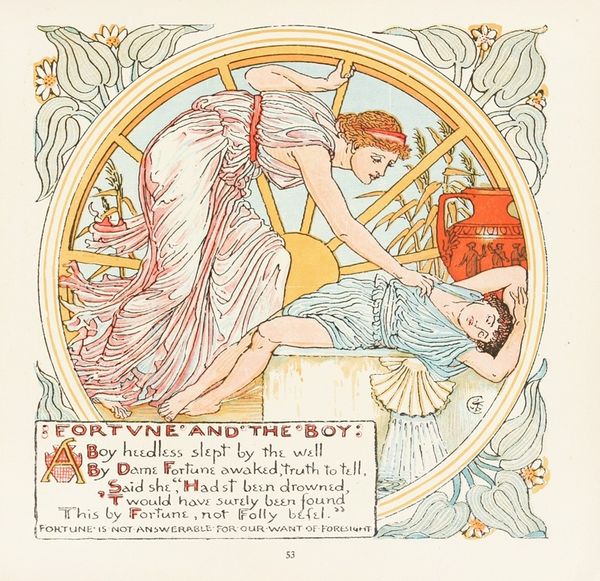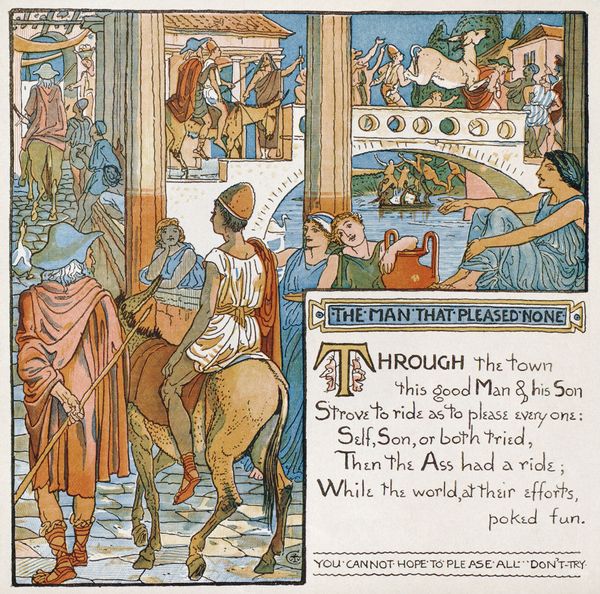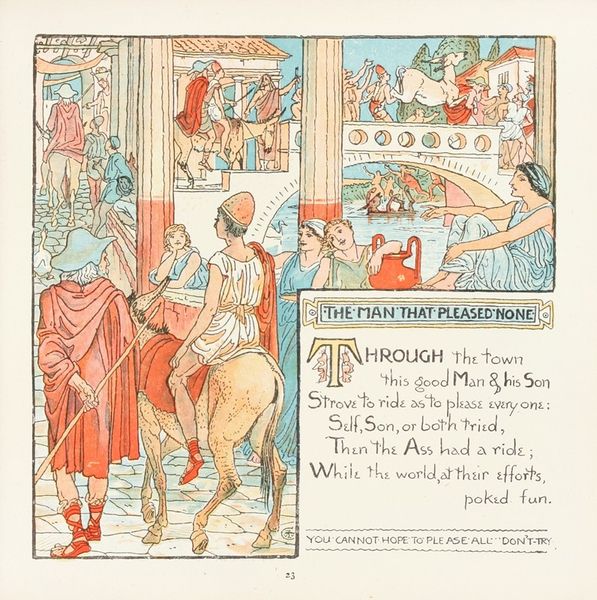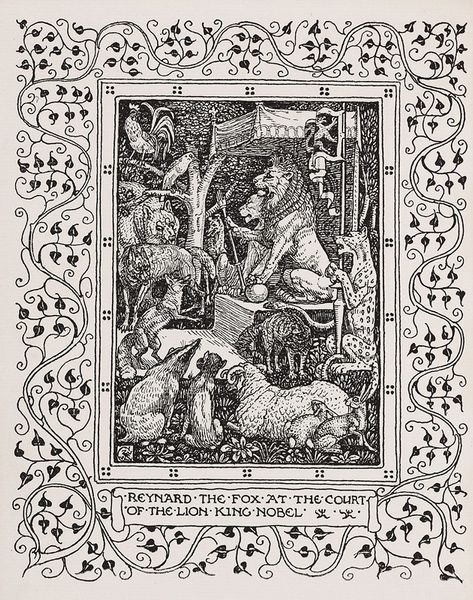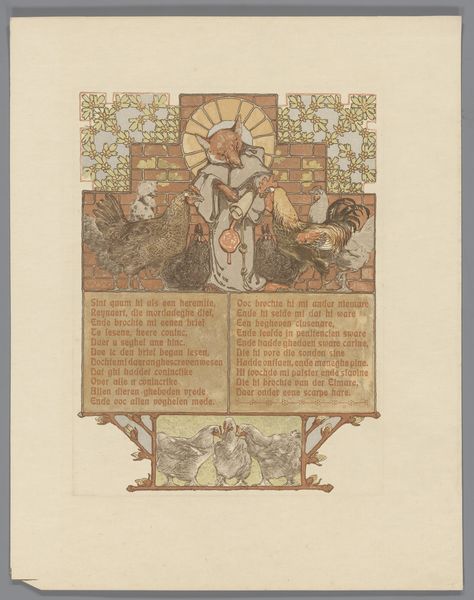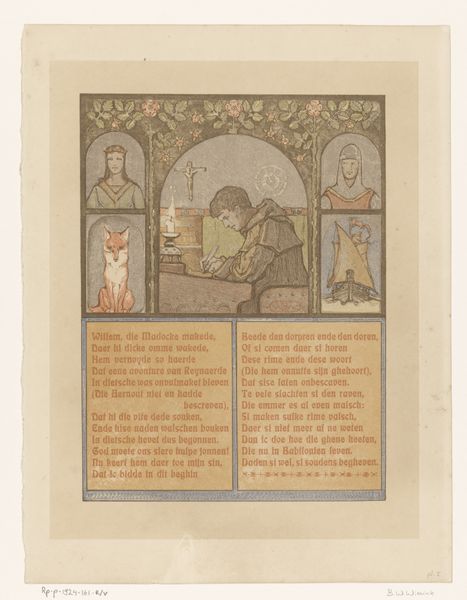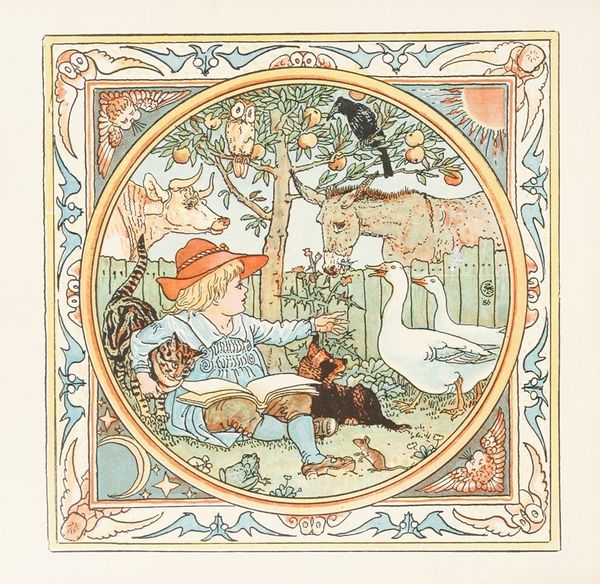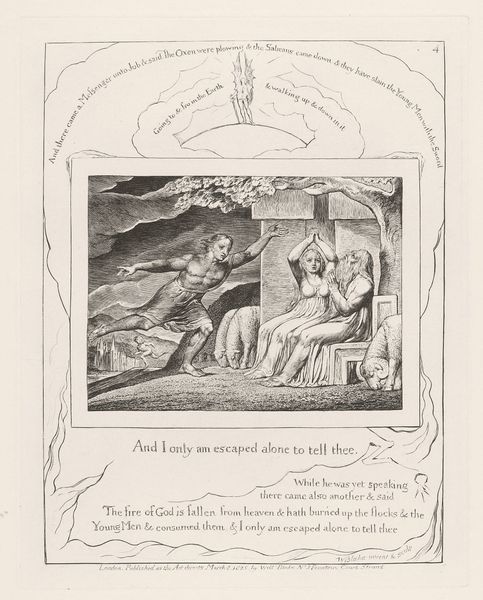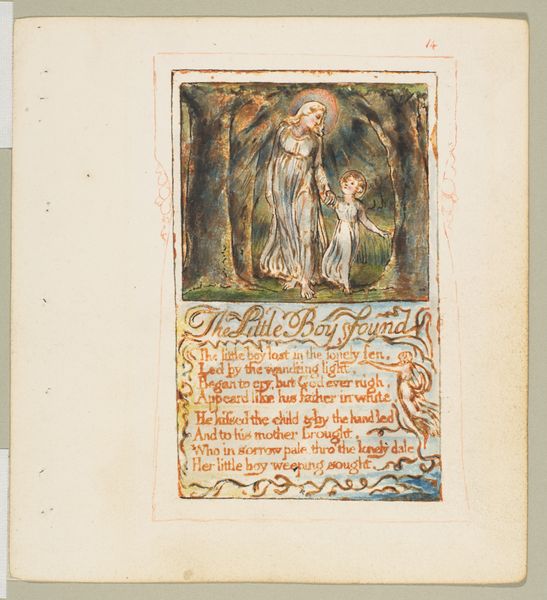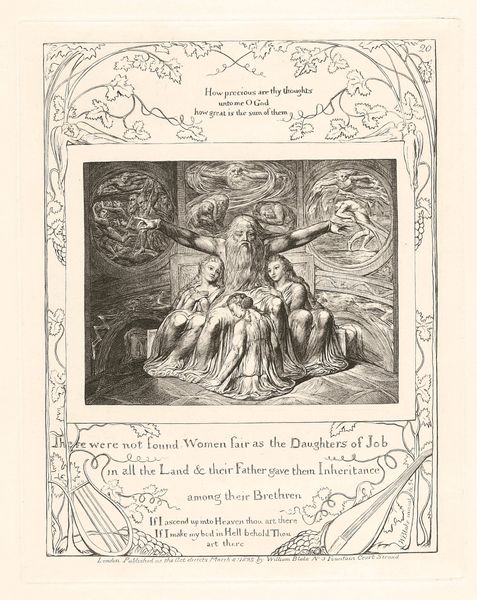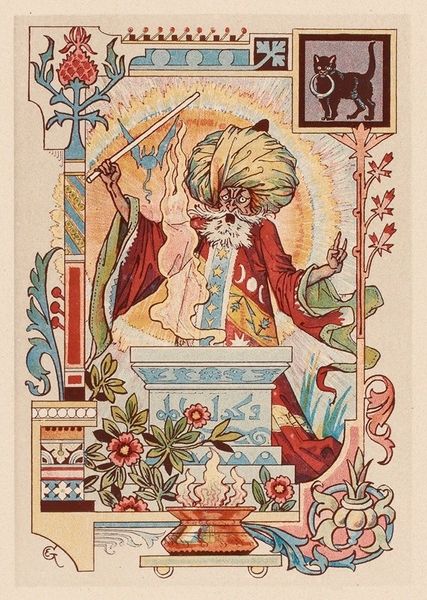
drawing, pen
#
drawing
#
narrative-art
#
pen illustration
#
figuration
#
ancient-mediterranean
#
pen
#
academic-art
Copyright: Public Domain: Artvee
Editor: Walter Crane's "Brother and Sister," created in 1908, is rendered in pen and ink, presenting what feels like a classical tableau. There's a strong sense of storytelling, but it’s hard to know exactly what’s unfolding here. What do you make of it? Curator: I see echoes of ancient Greek ideals juxtaposed against the social expectations placed on men and women even in the late 19th and early 20th centuries. Crane is referencing enduring cultural narratives. The sister gazes at her reflection – an ancient symbol of vanity, yes, but consider its cultural persistence and impact on women's self-perception over millennia. The brother's beauty, equally emphasized, presents a parallel expectation for men – and who validates it? Editor: That's insightful. I was just seeing it as a snapshot of domestic life. What about the father figure seemingly mediating these figures? Curator: Observe how he directs the studious daughter while seemingly holding up his son's scroll. The scroll and mirror become symbolic objects representing learning and vanity but think about them not just as binaries. Aren’t they both forms of reflection, of knowing oneself? He almost warns us of beauty being ‘bred in the brain’ . Does ‘handsome’ apply equally to both or not? Editor: So you see these figures and objects not just as simple representations but loaded with historical and societal context. Curator: Absolutely. Crane is drawing on a well of imagery and expectation, asking us to consider its weight, and perhaps question the distribution of value within the family and beyond. Symbols gain weight across time; art is how culture speaks to itself. Editor: I’m left wondering about what the painting isn’t overtly telling. Thanks for providing new pathways to understanding the image!
Comments
No comments
Be the first to comment and join the conversation on the ultimate creative platform.
